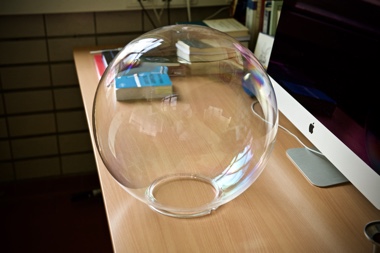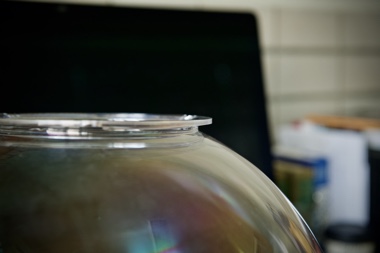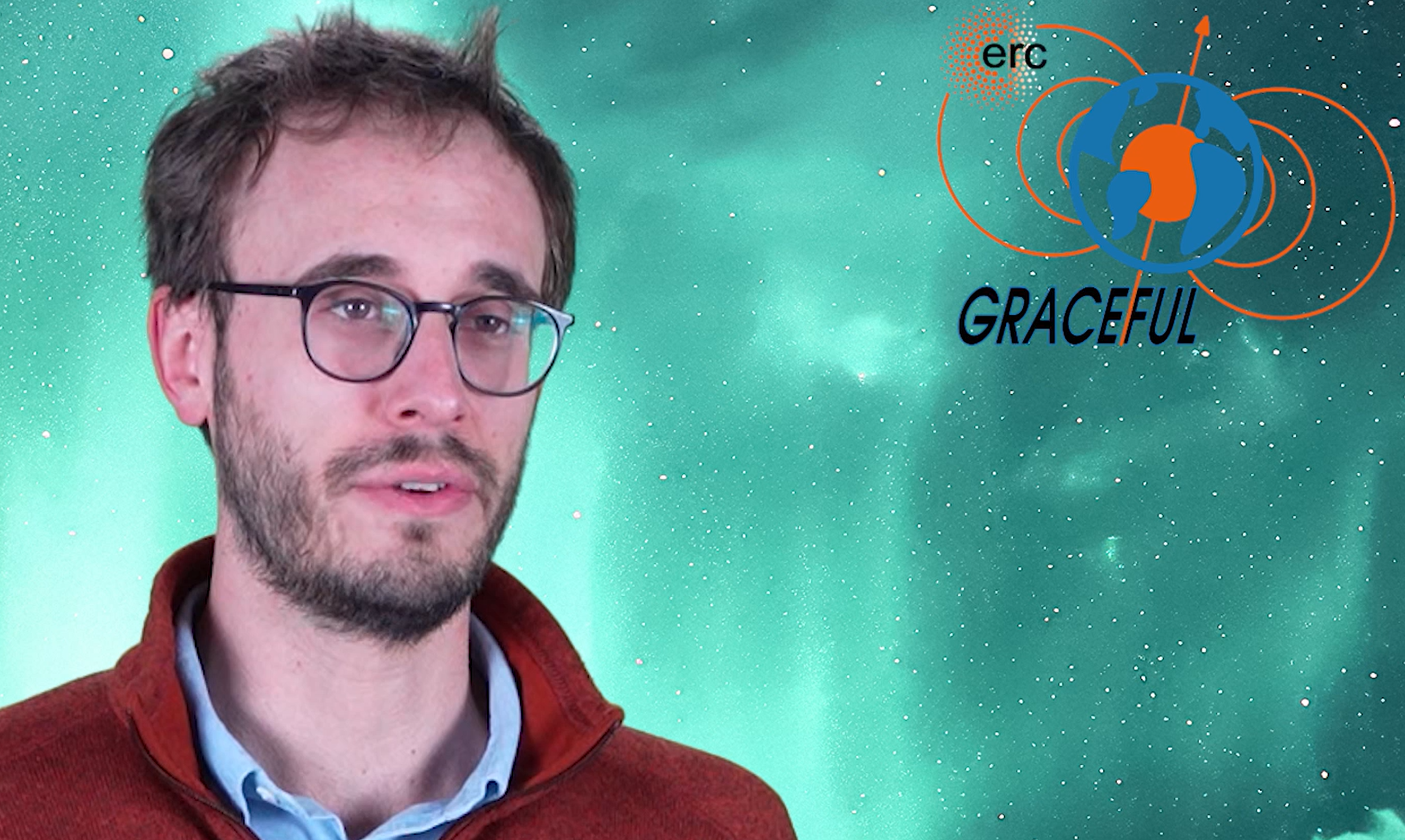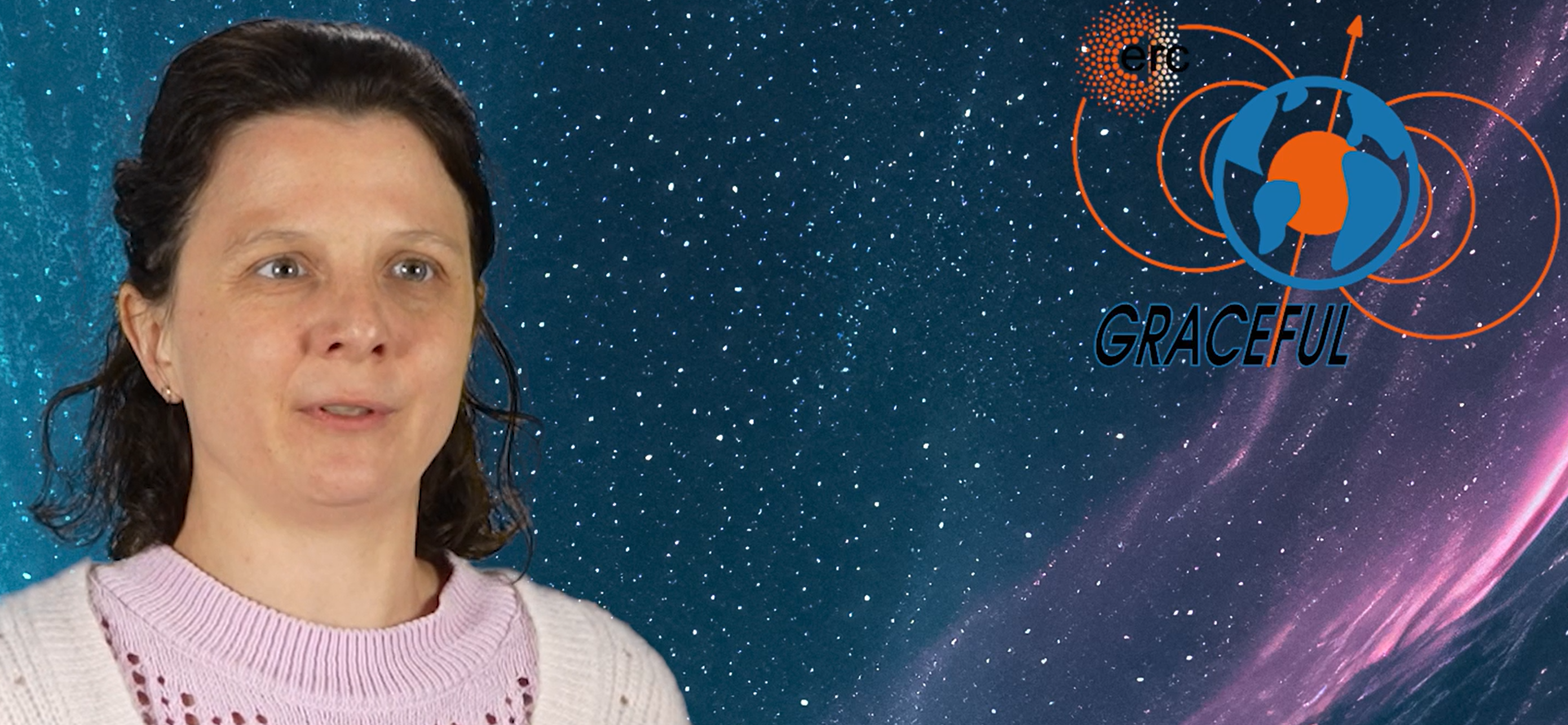Outreach
Presentation of the Project to Public
We have realized a movie with the explanations about our project. In this film, the three Principal Investigators of the GRACEFUL project - Véronique Dehant, Mioara Mandea, and Anny Cazenave - share the story behind the project and their experiences as women leading international research in geosciences. They present GRACEFUL’s main scientific results in clear and accessible language, brought to life through illustrations and visual storytelling. The film also introduces the project team, highlighting the involvement of Early Career Scientists and the collaborative spirit that underpins the research.
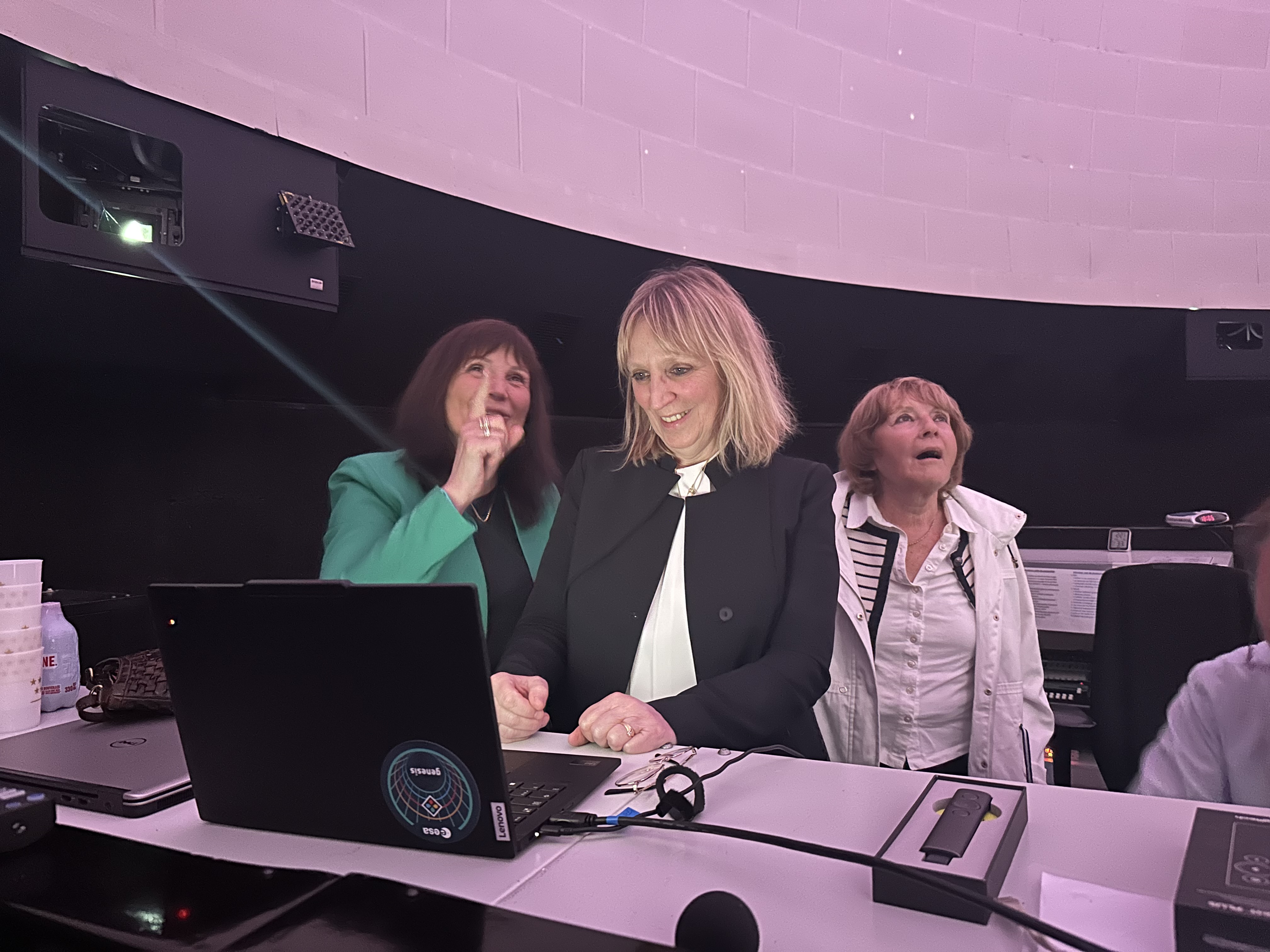
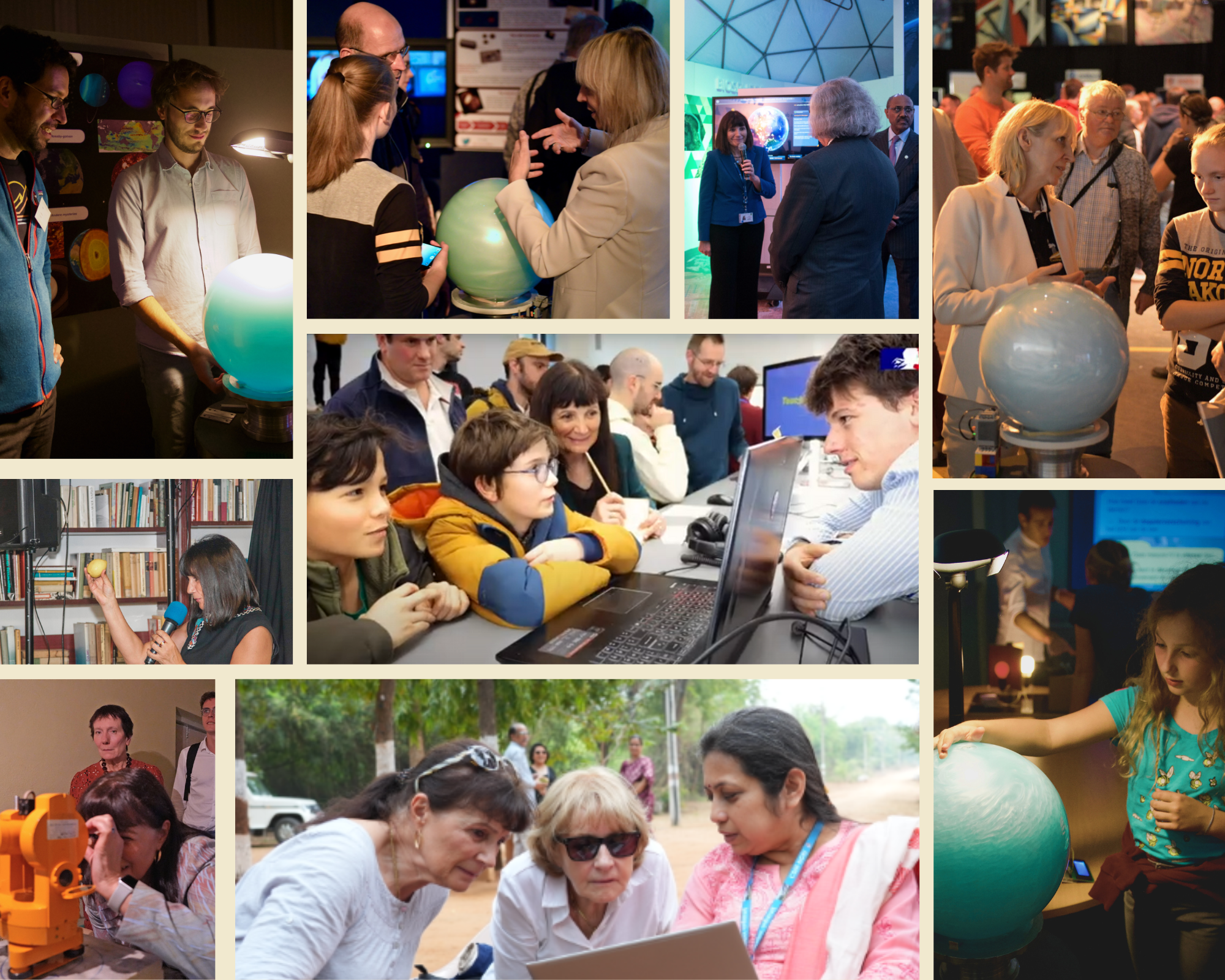
Movies representing possible flow in the Earth liquid core as studied in the project GRACEFUL
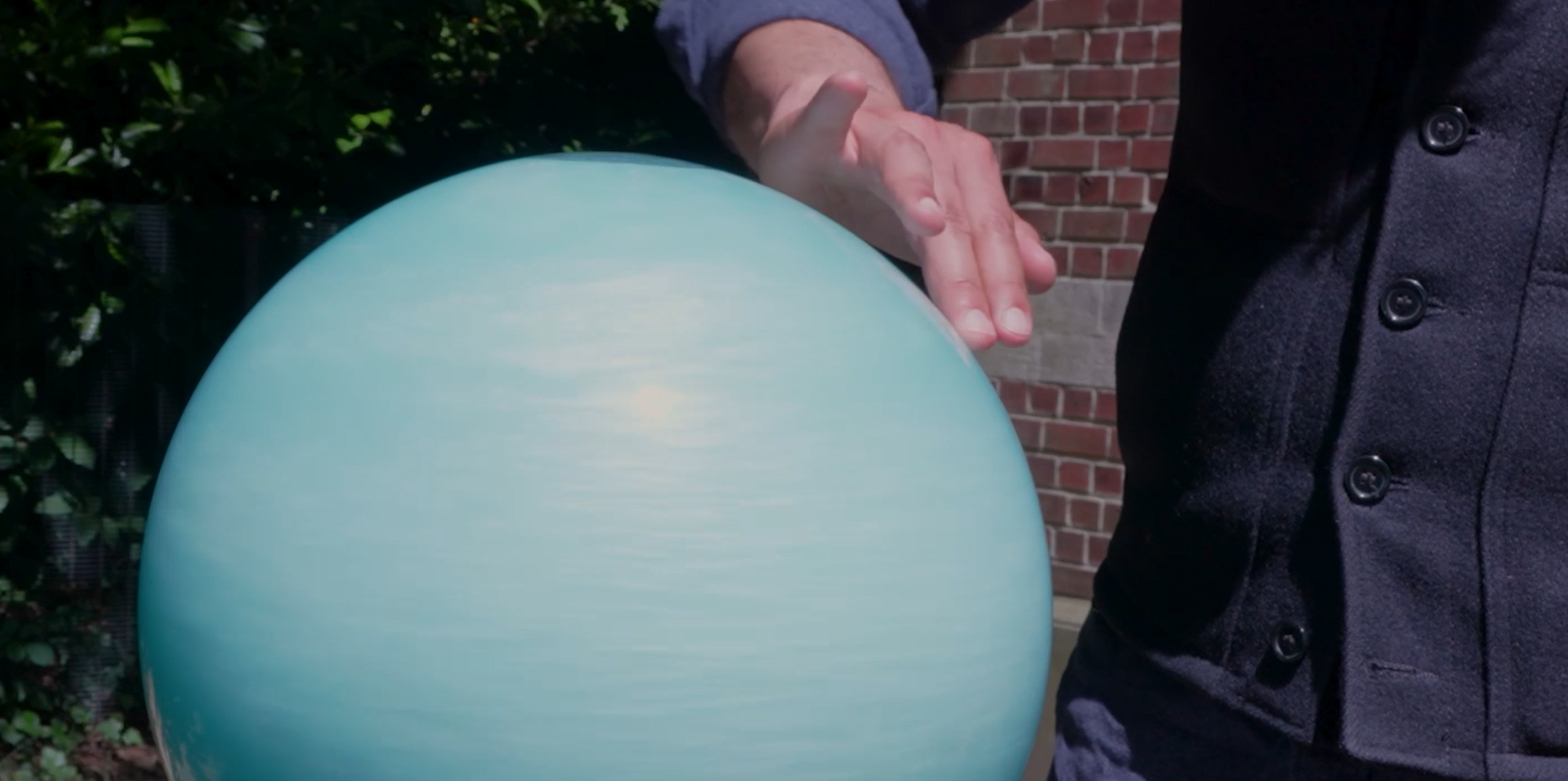
Our group at the Royal Observatory studies the dynamics of fluid layers inside rotating planets and moons. It is very difficult to imagine the kind of complex flows that we deal with. To help us with that, we built a miniature model of a fluid planet in our lab. Rotation is of major importance in the study of planetary fluid dynamics. With our lab planet, we wanted to visualise at least qualitatively how the fluid flow changes when the rotation speed varies in time. We needed our ‘planet’ to be as transparent as possible and we also needed a way to control its rotation with some level of precision.
We set to work building our lab planet using an 14” diameter acrylic globe, the same kind as used for outdoor lighting. We used an aluminium disc as a rotating platform mounted on a spherical ball bearing, all resting on a PVC stand. We still needed a way to control the rotation and that was when we heard about DIYnamics and thought it would be a perfect match for our purpose!
In the past, in order to visualise the currents in fluids, scientists used Kalliroscope fluid, a rheoscopic fluid developed by Paul Matisse in 1966, unfortunately not available anymore. We considered mica powder and other alternatives that ended up being not so great compared to Kalliroscope fluid. However, Daniel Borrero-Echeverry from Willamette University devised an ingenious way [1] to get the same rheoscopic effect as Kalliroscope, simply using shaving cream! We were able to obtain large quantities of rheoscopic fluid, about 22 Kg (or 48 pounds), which we used to fill the acrylic globe. The technical service from the observatory helped us with the machining of the aluminium disc platform. The globe is simply glued (with RTV) to the aluminium disc. We made a threaded hole through the centre of the disc which we use for filling/draining the globe.
We use the motorised lego wheel to drive the rotation via the aluminium disc platform. The lego motor is powerful enough to spin the whole device! Mesmerising flow patterns appear when the spin rate is changed slightly, which we do via the IR remote. In the videos you can hear the motors whirring and change pitch as we slow down or spin up the globe, you can see clearly the shear in the flow caused by the accelerating/decelerating globe surface in contact with the fluid.
If we let the globe spin for a while at a constant rate, the fluid will eventually spin at the same rate as the globe, in sync, with no or very little flow in the interior as indicated by the absence of any patterns in the fluid. This might take 5 to 10 minutes to achieve. If we reduce the speed of the globe just a notch, turbulence will develop straddling the equator, induced by Görtler vortices most likely. However, if the fluid is still not yet spinning in unison with the globe surface, turbulence develops within a very well defined band, which we can see in the videos. We can’t claim we understand all features we see in the flow but we do recognise many, some of the them resembling patterns we see in Jupiter, Saturn (think of the polar hexagon), or the Earth’s atmosphere.
The lab planet is a reality thanks to Antony Trinh, Jeremy Rekier, Santiago Andres Triana, the technical service at the Royal Observatory of Belgium, and of course the DIYnamics team for their brilliant idea!
[1] Borrero-Echeverry, D., Crowley, C. J., & Riddick, T. P. (2018). Rheoscopic fluids in a post-Kalliroscope world. Physics of Fluids, 30(8), 1–6. https://doi.org/10.1063/1.5045053
Animation Movie: “GRACEFUL: A Deep Inspiration”
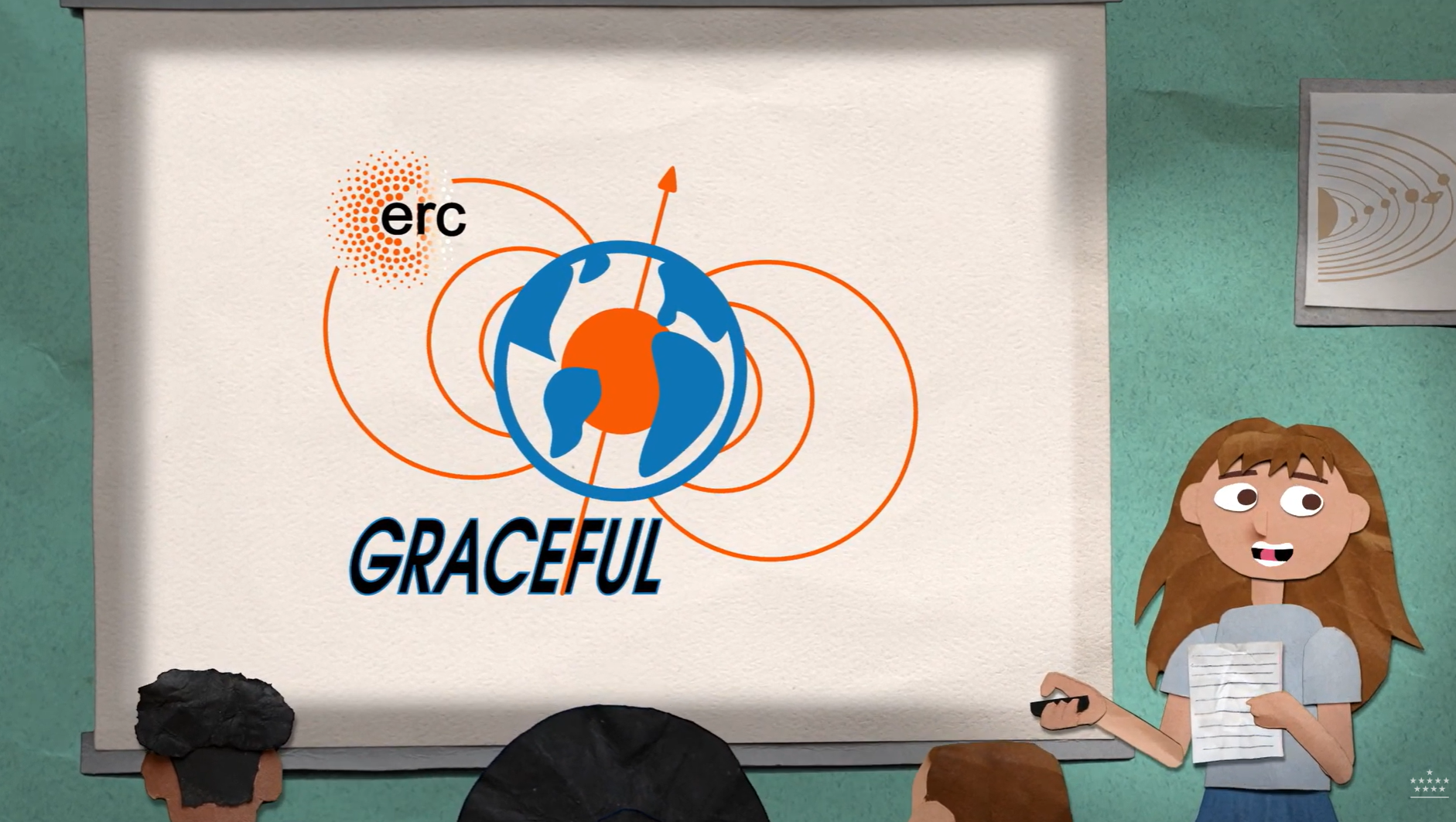 When a student named Elise presents her school project on Earth's deep interior, she unveils more than scientific knowledge — she reveals a personal transformation inspired by three pioneering women researchers. “GRACEFUL: A Deep Inspiration” is a poetic animated short film about science, curiosity, representation, and the beauty of discovery.
link
When a student named Elise presents her school project on Earth's deep interior, she unveils more than scientific knowledge — she reveals a personal transformation inspired by three pioneering women researchers. “GRACEFUL: A Deep Inspiration” is a poetic animated short film about science, curiosity, representation, and the beauty of discovery.
link
Interviews of GRACEFUL team members
Katia Pinheiro, member of GRACEFUL, realized a few interviews of GRACEFUL team members.
- Teaser GRACEFUL

Teaser about GRACEFUL with participation of GRACEFUL members. - PI Veronique Dehant
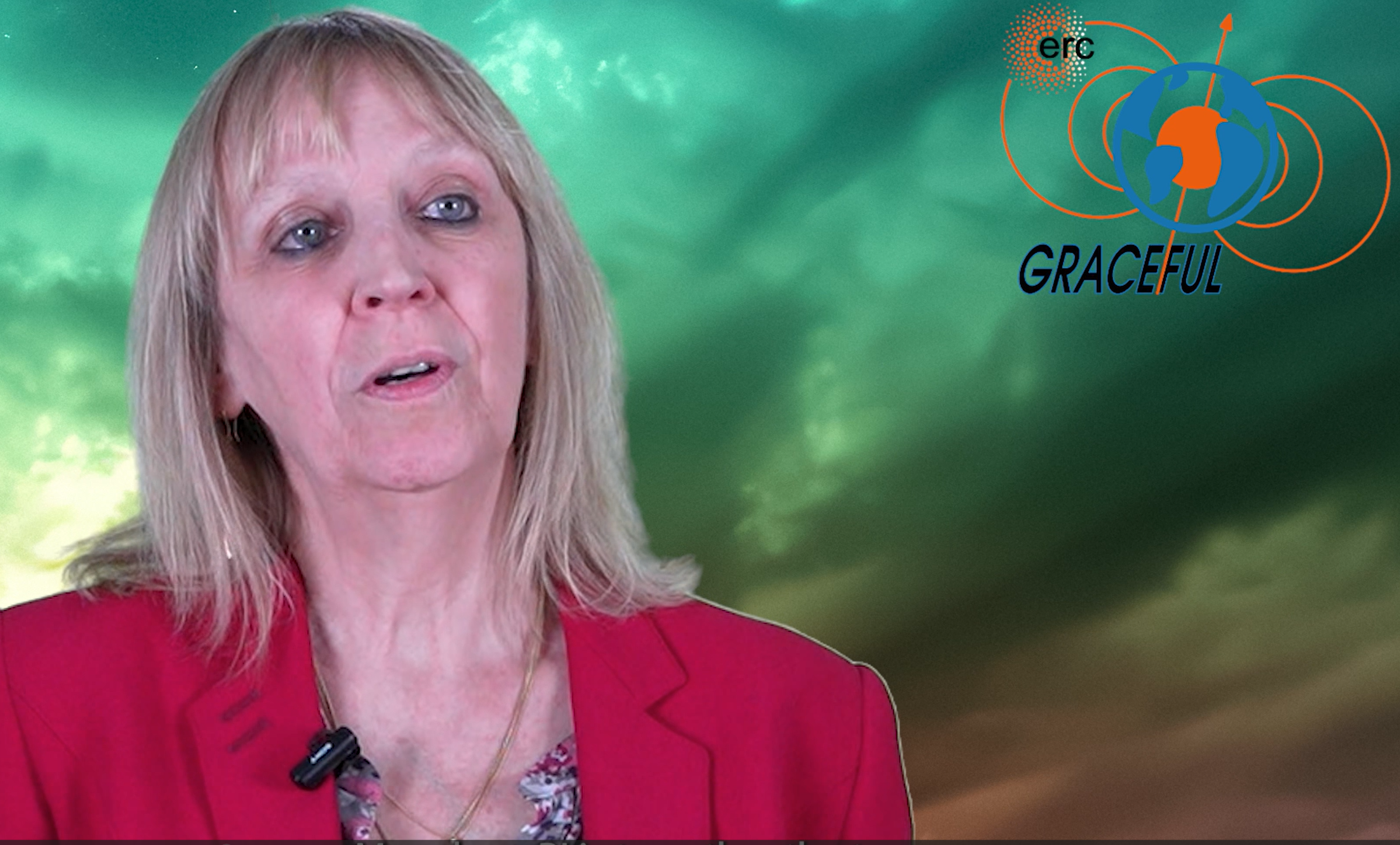
Overview, Benefits, and Challenges of the project. - PI Mioara Mandea
- PI Anny Cazenave
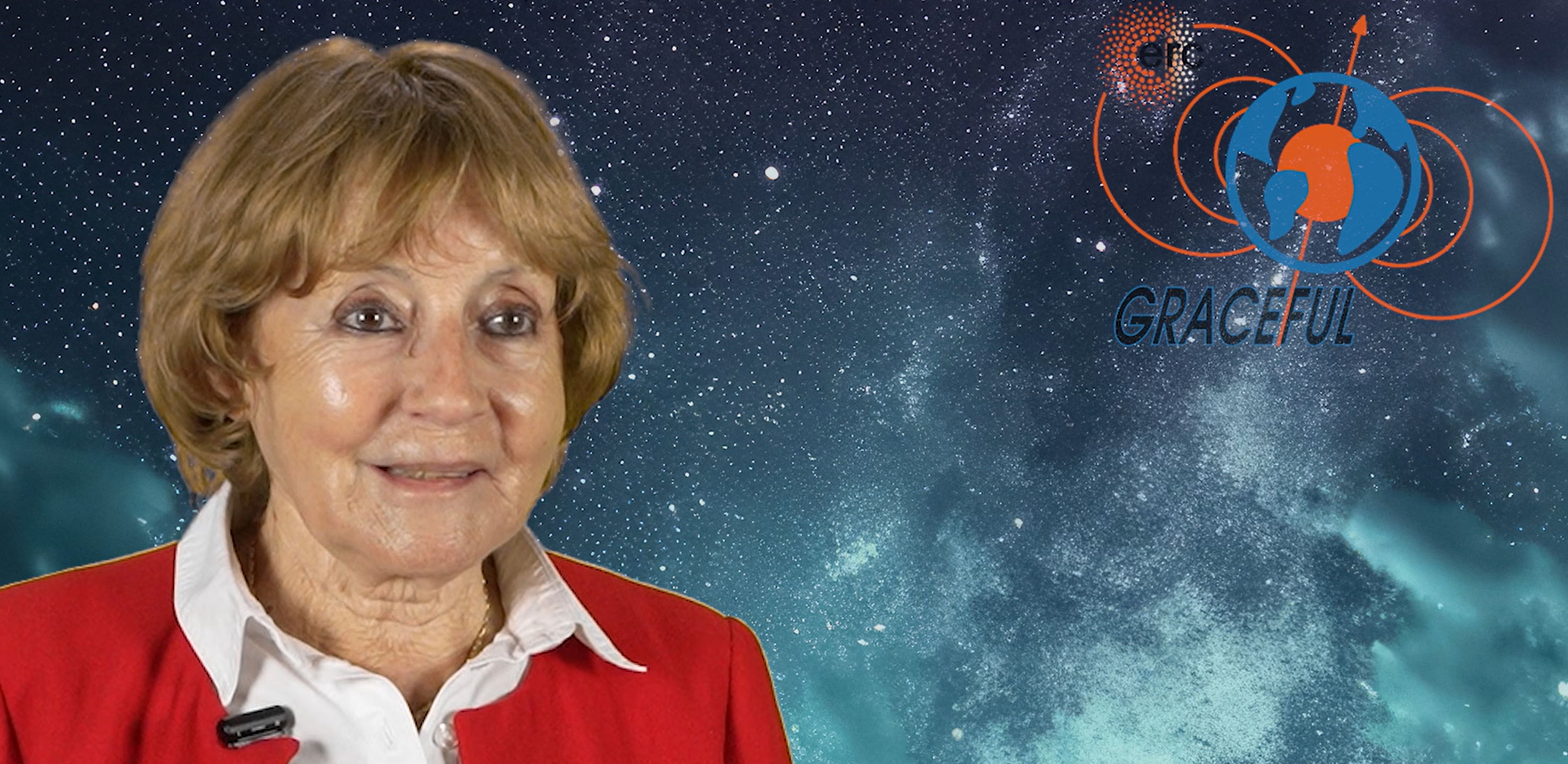
Benefits and Challenges of the project. - Senior Scientist Nicolas Gillet
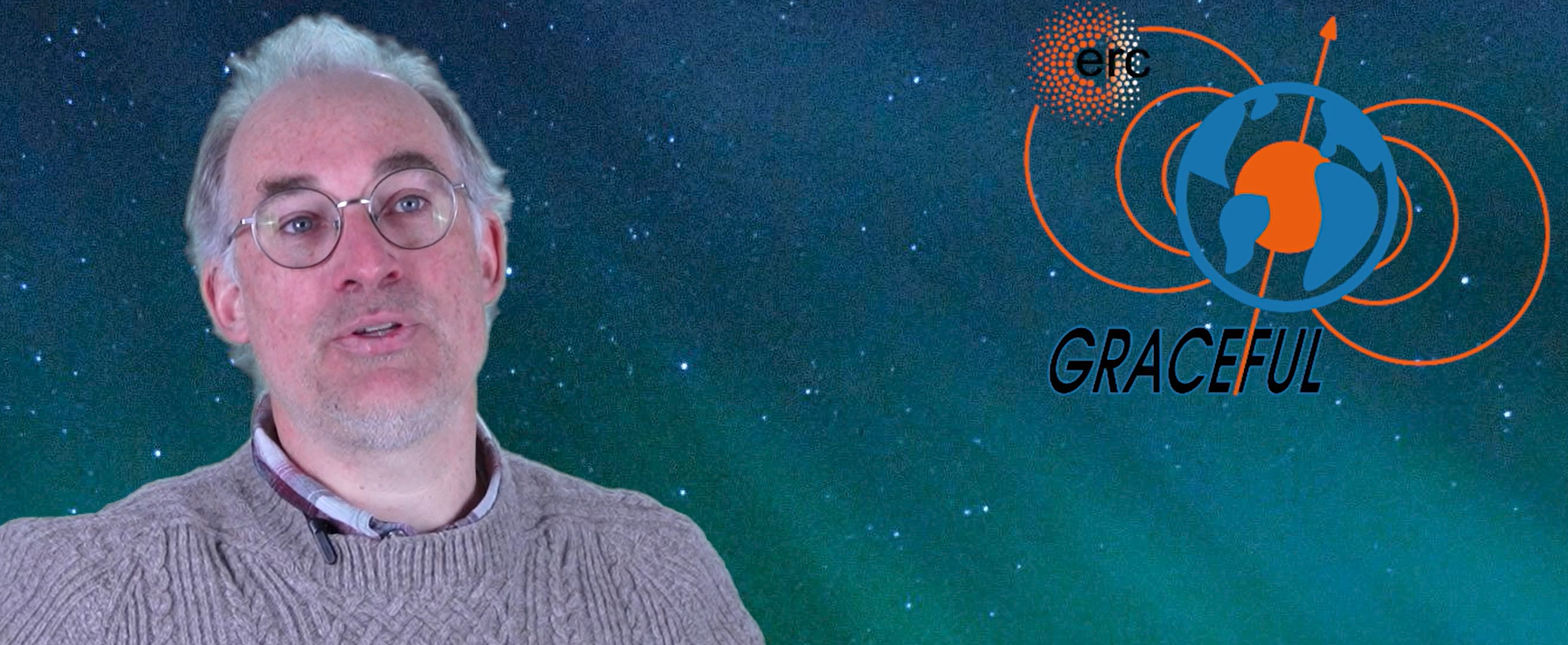
Benefits, Challenges, and Results of the project. - Senior Scientist Dominique Jault
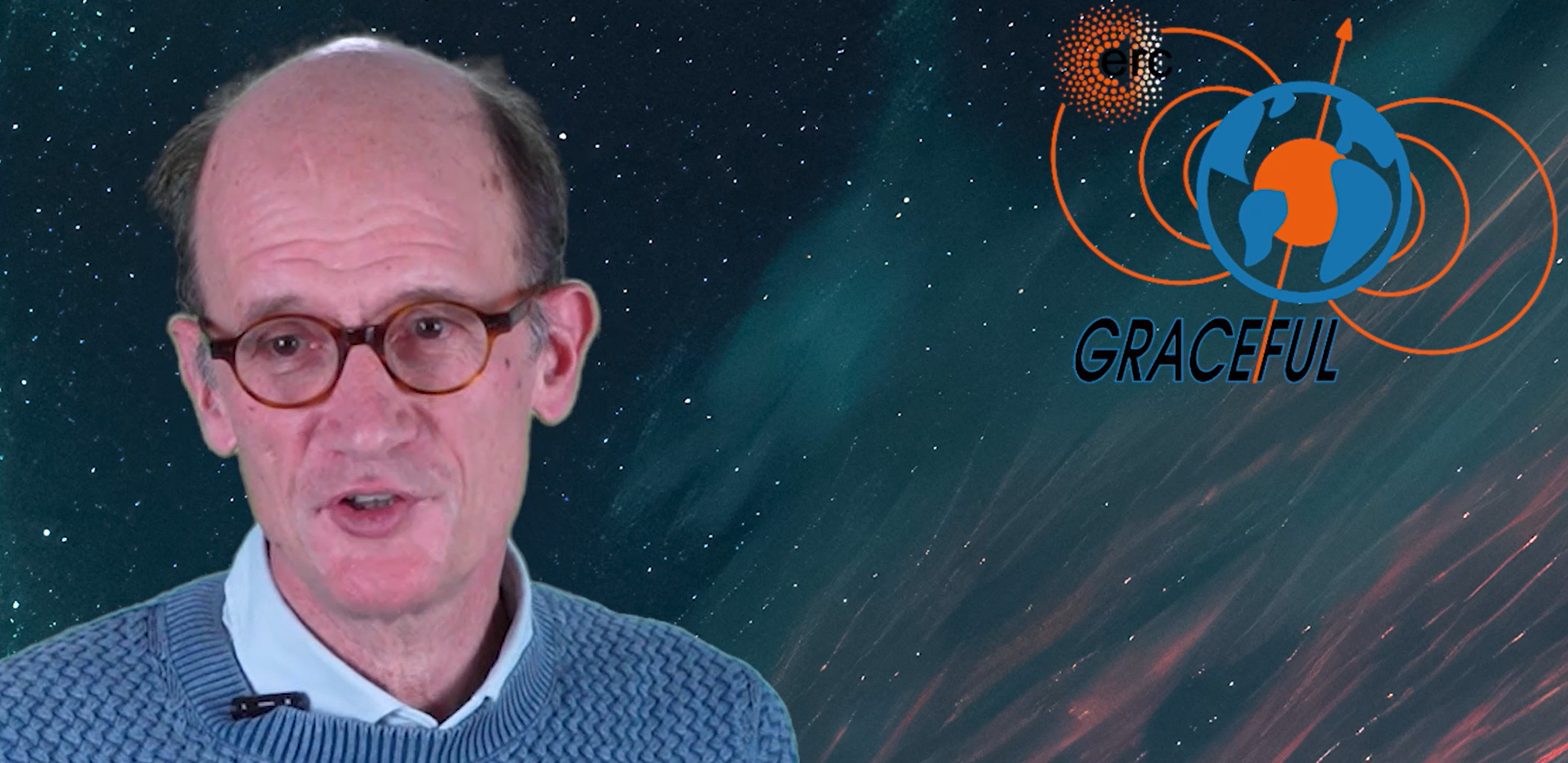
Benefits, Challenges, and Results of the project. - Senior Scientist Santiago Andres Triana
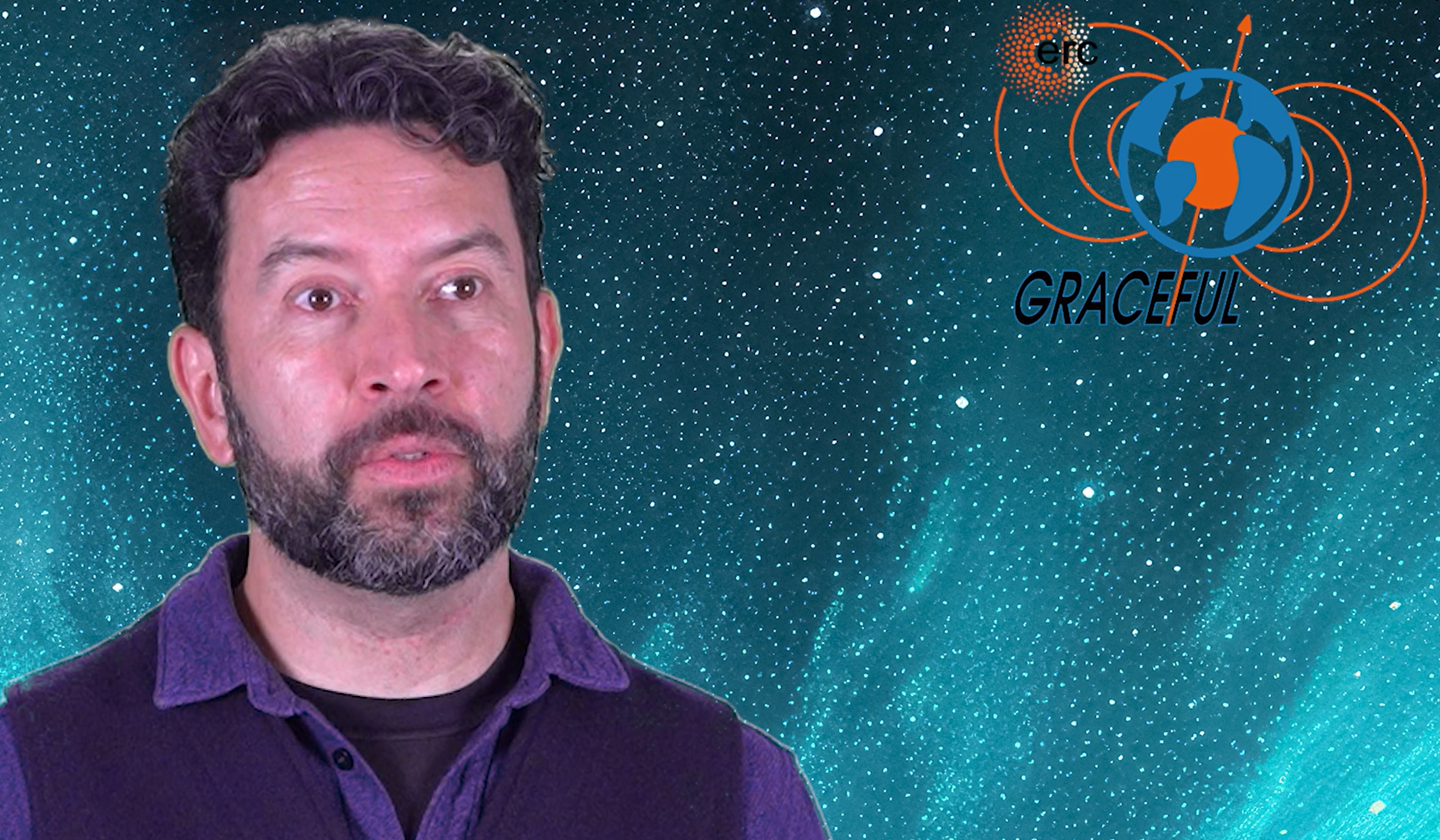
Results of the project. - Senior Scientist Jeremy Rekier
- Senior Scientist Julia Peffer
- Senior Scientist Severine Rosat
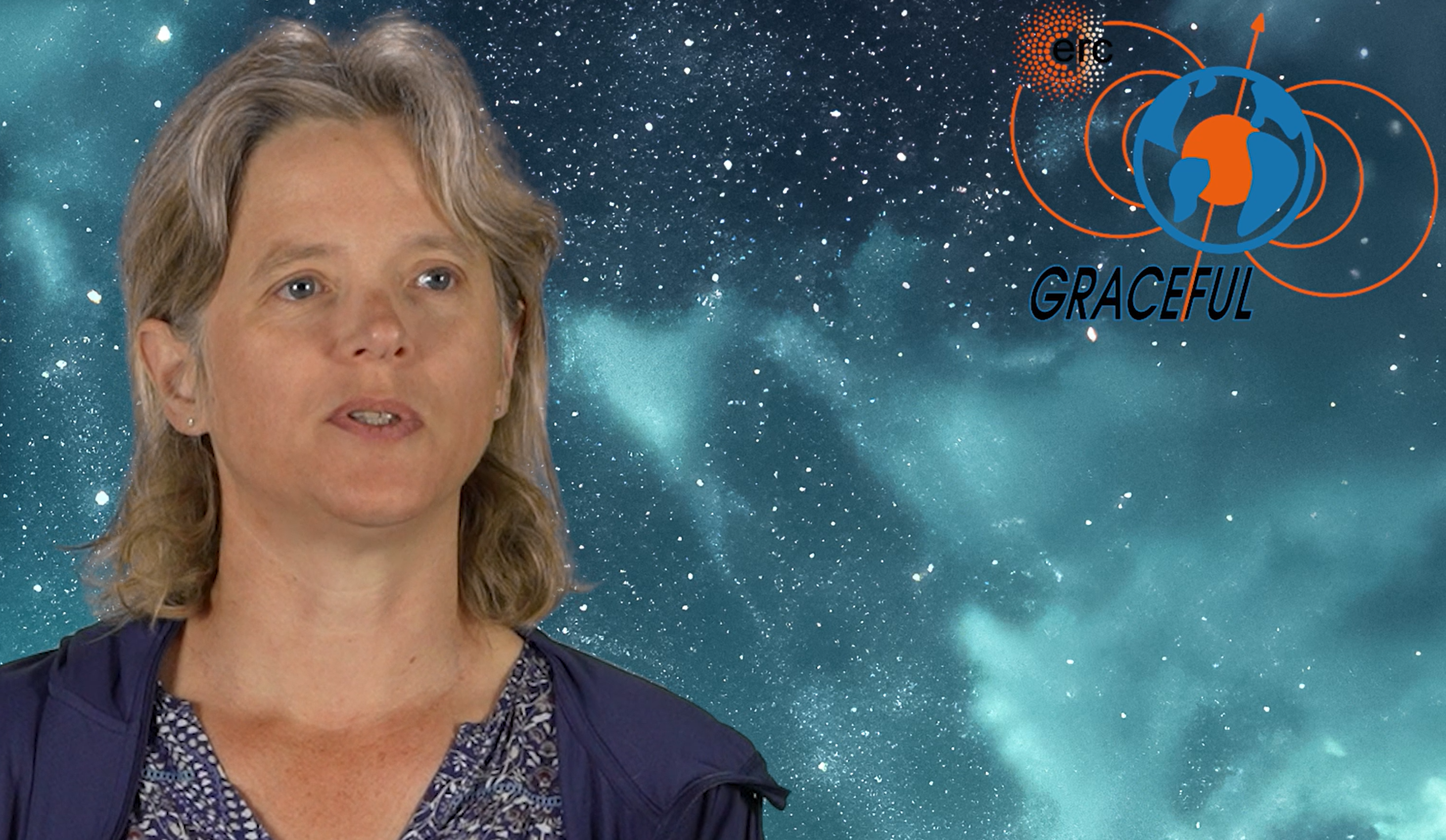
Results of the project. - PhD Hugo Lecomte
- Young Scientist Jorge Martinez
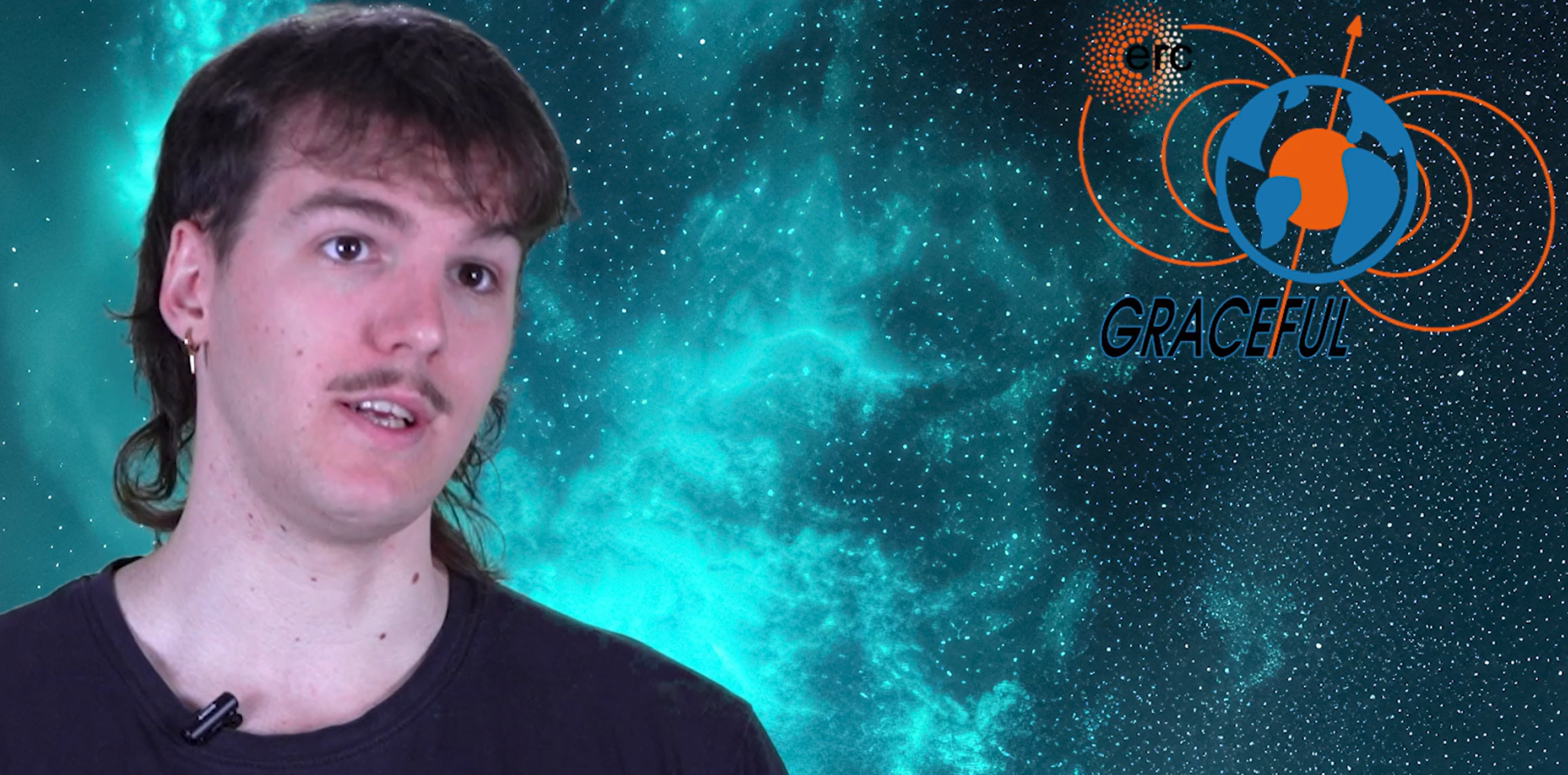
Introduction of Jorge's professional career and Results of the project.
Movies representing the changes in the magnetic field
Scientists from GRACEFUL - CNRS - University of Grenoble and Royal Observatory of Belgium have contributed to an ESA movie link1 or link2
Publication on "Les Curieux!" website
There is a publication on "Les Curieux!" website regarding the consequences of a 6-year oscillation of the Earth system, recently discovered during the GRACEFUL project. Mioara Mandea addresses three questions:
- What allows us to understand what is happening inside the Earth?
- What are the interactions between the Earth's interior, oceans, and atmosphere?
- What are the mechanisms behind the 6-year cycle that affects the entire Earth system?
Please see the full publication here: https://www.curieux.live/2025/02/10/le-systeme-terrestre-oscille-t-il-avec-une-periode-de-6-ans/
CNES did a game jam in which GRACEFUL participated
Can we explain scientific research with video games? This was the objective of this scientific game jam organized by CNES and Quai des Savoirs in Toulouse. Six CNES doctoral students presented their thesis in 180 seconds to video game creators. The following 48h - top time! - to code a playful version of this scientific work and submit a video game proposal to a jury of experts as well as to the public present. Mioara Mandea was involved in organising and Hugo Lecomte was one of the participating students.
See more on https://videotheque.cnes.fr//index.php?urlaction=doc&id_doc=39263&rang=1&id_panier=
https://www.youtube.com/watch?v=VCEa7waQCLo
and play the game Wooble _ based on the Hugo Lecomte PhD https://itch.io/jam/scientific-game-jam-printemps-2023
With the game “Wobble”, the GRACEFUL team asked the young generation to help Atlas (the game avatar) to support Earth rotation. https://skilda.itch.io/wobble
GRACEFUL member Hannah Rogers participated in cartoons realisation explaining the planets, the Earth, and Mars and founded by EuroPlaNet:
Episode 1: Bimbim's Team consists of Bimbim and his friends. In this first episode, Bimbim invites Noca to his birthday party and in turn learns about the planets of the Solar System.
- In English: https://www.youtube.com/watch?v=hhbIw-wEbzg
- In French: https://www.youtube.com/watch?v=rVvF8Z9S9gU
Episode 2: Bimbim's Team consists of Bimbim and his friends. In this second episode, Bimbim invites Tatuoca to his birthday party and in turn learns about our planet Earth.
- In English: https://www.youtube.com/watch?v=g5zSNkmDuto
- In French: https://www.youtube.com/watch?v=OLbt9hJ5a9I
Episode 3: Bimbim's Team consists of Bimbim and his friends. In this third and final episode, Bimbim invites Yuri to his birthday party and learns about our neighbour Mars.
- In English: https://www.youtube.com/watch?v=bimmc51FY1c
- In French: https://www.youtube.com/watch?v=USobRrdqy9Y
GRACEFUL member Hannah Rogers participating in education and outreach activities under IUGG:
Hannah Rogers has been an active member of the International Association of Geomagnetism and Aeronomy (IAGA) 'social-media working group', which is now renamed to 'Communication and Networking Working Group'. IAGA is one of the associations encompassed by the International Union of Geophysics and Geodesy and aims to educate the public (as well as other scientists) about the work undertaken within this region. Hannah has been working on a number of projects including:
- documentaries - Hannah has participated in filming and writing for three documentaries:
- Magnetic Mosaic - a documentary about the different parts of the Earth's magnetic field and how they interact. The film was a top-3 selected movie at UNESCO Earth's Film Festival in the category 'Women in Geoscience’ and finished 5th in the Public Choice at the Earth Futures Film Festival out of 972 initial entries. Original concept by Katia Pinheiro. Funding references: Observatório Nacional - Brazil, GFZ - German Research Centre for Geosciences - Potsdam, FAPER J. - Foundation for support of research in the state of Rio de Janeiro, IAGA - International Association of Geomagnetism and Aeronomy; Magnetic Mosaic: Earth Futures Festival
- Our Magnetic Earth: From core to space - A documentary showing the different parts of the geomagnetic power spectra and how different fields interact. This film is currently in production and Hannah has been involved in script writing. Original concept by Katia Pinheiro. Funding references: International Union of Geophysics and Geodesy; Observatório Nacional – Brazil, FAPERJ - Foundation for support of research in the state of Rio de Janeiro, IAGA - International Association of Geomagnetism and Aeronomy;
- GeoScience Connections - An animated movie featuring multidisciplinary interviews with early career scientist interviews from across. This film is currently in production and Hannah has been involved in script writing and is one of the featured interviewees alongside fellow GRACEFUL member Hugo Lecomte. Original concept by Katia Pinheiro. Funding references: International Union of Geophysics and Geodesy; Observatório Nacional – Brazil, FAPERJ - Foundation for support of research in the state of Rio de Janeiro, IAGA - International Association of Geomagnetism and Aeronomy;
- Blog posts - Hannah has participated in a number of blog posts for the IAGA blog. These include on her research, advice for opportunities and skill based information. These blogs can be found at: IAGA-AIGA blog
- Outreach filming - Hannah has participated in documentaries and short interviews together with early career researchers for IAGA to explain to the general public (1) about the work and lifestyle of researchers (e.g., https://www.youtube.com/watch?v=YZm_PeNr8mk&list=PLoqM2SiE_Jf6BQPr_-Qlyrq9-LgY8b85S&index=10), and in particular concerning the PhD thesis of Hugo Lecomte also member of GRACEFUL; (2) about the work of experienced researchers discussing the time variations of the geomagnetic field - ranging from long-term changes over millions of years to rapid fluctuations within milliseconds. See https://www.youtube.com/watch?v=PifiJ79iVa8&list=PLoqM2SiE_Jf7I2yd9zahyAAu75qkzWHYD&index=1
She has now been elected chair of the 'Communication and Networking Working Group' for the 2023-2025 period and oversees the communication in regards to its social media platforms.
GRACEFUL member Charlotte Gaugne published a paper that has attracted a lot of media:
The paper is entitled “GRACE Detection of Transient Mass Redistributions During a Mineral Phase Transition in the Deep Mantle” and is published in Geophysical Research Letters .
The science outreach links in the media related to this paper are:
- Nature - Mysterious changes near Earth’s core revealed by satellites in space.
- Science Alert - Vast anomaly in Earth's gravity field signals shifts deep beneath the surface.
- The Debrief - Something deep within the Earth is altering our planet’s gravity—and satellite data may hold clues to the mystery.
- IFLScience - 7,000-Kilometer gravity anomaly detected By NASA over the Atlantic. It came with a "geomagnetic jerk".
- The Watchers - Gravitational anomaly in 2007 hints at rapid changes near Earth’s core.
- The times of India - Scientists detect strange shifts in the Earth’s core using GRACE satellites.
- LBV - Satellites detect mysterious changes in the Earth’s core.
- Popular Mechanics - 18 years ago, Earth’s gravity glitched. The answer was buried 1,800 miles underground.
- GEO - Depuis l'espace, des satellites repèrent une anomalie mystérieuse au cœur de la Terre.
Two videos were also released:
- From Sasaki Andi - On YouTube
- From Anton Petrov - On YouTube
GRACEFUL team participated in many public presentations
- Cazenave A., 2020, “Coastal sea level rise from satellite altimetry.”, invited lecture, ISSI, Bern, Switzerland, 9 November 2020.
- Cazenave A., 2020, “The Earth, a planet like no others.”, invited lecture, 25th anniversary of ISSI, Bern, Switzerland, 13 November 2020.
- Dehant Veronique, 2020, “Habitabilité de Mars et ailleurs.”, Connaissance et Vie Waterloo, virtual, 19 November 2020.
- Cazenave A., Sea level rise observed by satellite altimetry from global to local scales, invited lecture, National Geophysical Research Institute (NGRI), Hyderabad, India, 20 November 2020.
- Cazenave A., 2020, “Le niveau des océans vu par les satellites.”, invited conference at the Bureau des longitudes, 3 December 2020.
- Cazenave A., 2021, “Niveau de la mer côtier vu par altimétrie.”, invited conference at the Bureau des longitudes, 6 January 2021.
- Cazenave A., 2021, “Climate change: the role of space observations.”, invited lecture, Aligarh Muslim University, India, Centenary Science Webinar, 28 February 2021.
- Cazenave A., 2021, “Satellite altimetry and sea level change.”, invited lecture, Hong-Kong Univ., February 2021.
- Dehant V., 2021, “L'habitabilité de Mars et ailleurs.”, public conference for the Science Faculty of UCLouvain, 29 March 2021.
- Dehant V., 2021, “L'habitabilité de Mars et ailleurs.”, public conference for the KotAstro and MARS UCLouvain, virtual, 28 April 2021.
- Dehant V., 2021, “Habitability of in the Solar System.”, Cambridge University Seminar, virtual, 5 May 2021.
- Dehant V., 2021, “L'habitabilité de Mars et ailleurs.”, Académie royale de Belgique et la Délégation générale Wallonie-Bruxelles en France, Cycle sur l'Homme et son environnement, virtual, 5 May 2021.
- Cazenave A., 2021, “Système Terre: le role de l’observation spatiale.”, conference invitee, 2eme atelier INSU-INSIS sur l’instrumentation pour le suivi environmental, observation de la Terre et télédétection, Rennes, July 2021.
- Cazenave A., 2021, “La hausse actuelle du niveau des mers.”, invited conference, Meeting ‘Grotte Cosquer’, Marseille, September 2021.
- Cazenave A., 2021, “Water cycle, overview and challenges; importance of observations.”, invited talk, MeteoSwiss, Bern, Switzerland, September 2021.
- Dehant V., 2021, “Habitability of Mars and elsewhere in the solar system.”, conference for ULB Colloque Solvay, Brussels, 28 September 2021.
- Dehant V., 2021, “Rotation and interior of terrestrial planets and moons - an ingredient for habitability.”, invited talk, The third China-Belgium Symposium Science and Technology exchange symposium, Virtual, 30 October 2021.
- Dehant V., 2021, “Geodesy at Mars and Mars' habitability.”, invited talk, Institute of Geology and Geophysics, Chinese Academy of Sciences, Beijing, China, Virtual, 18 November 2021.
- Cazenave A., 2021, Série de conferences sur le changement climatique, le niveau de la mer et l’observation spatiale de la Terre, Université de Ziguinchor, Senegal, November 2021.
- Dehant V., 2021, “Mission vers la planète Mars.”, Conference for the Société Européenne des Ingénieurs et Industriels (SEII), Château Ste-Anne, Auderghem, 26 November 2021.
- Dehant V., 2022, “Habitabilité de Mars et ailleurs.”, Conférence pour l'Université des Ainés de l'UCLouvain, 24 February 2022.
- Dehant V., 2022, “Habitabilité de Mars et ailleurs.”, public conference for the Printemps des Sciences, UCLouvain, 22 March 2022.
- Dehant V., 2022, “Mars était-elle habitable dans le passé ?”, public conference for the amateur astronomers, Woluwé, 2 April 2022.
- Dehant V., 2022, “Planète Mars: résultats des dernières missions spatiales.”, public conference for the Collège Belgique, Charleroi, 21 April 2022.
- Cazenave A., 2022, “The Earth and the environment observed from space.”, Royal Society, London, April 2022.
- Cazenave A., 2021, “L'apport de l’observation spatiale à l’étude du climat.”, evening ‘Climate’, Ceret, April 2022.
- Dehant V., 2022, “Mars new results for constraining its interior and habitability.”, colloquium Berlin Technical University, Berlin, Germany, 12 May 2022.
- Dehant V., 2022, “Gender dimension in planetary science.”, Berlin Technical University, Berlin, Germany, 12 May 2022.
- Dehant V., 2022, “Gender in EU project.”, EGU 2022 General Assembly, EOS3.1 – Promoting and supporting equality, diversity and inclusion in the geosciences, abstract number EGU22-7535, Hybrid meeting, Vienna, Austria, 23-28 May 2022.
- Cazenave A., 2022, “Hausse du niveau de la mer.”, invited conference, Colloque de Port Vendres sur le changement climatique, June 2022.
- Mandea M., 2022, “Comment construit-on un modèle de champ magnétique terrestre ?”, TIMEWORLD, Paris, France, 30 June 2022.
- Cazenave A., 2022, “Changement climatique et hausse du niveau de la mer.”, Colloque de Cerisy sur le changement climatique, September 2022.
- Cazenave A., 2022, “Sea level rise, a crucial indicator of global warming: 30 years of space borne measurements.”, Highlight Lecture at International Astronautical Congress, Paris, 20 September 2022.
- Dehant V., 2022, “Mars a un cœur liquide! Comment peut-on en être certain?”, Rendez-vous à « frites et sciences », Brussels, 21 September 2022.
- Cazenave A., 2022, “Observing the Earth from space.”, Invited lecture, European Academy of sciences, Brussels, 25 October 2022.
- Cazenave A., 2022, “La Terre et l’environment observes depuis l’espace.”, invited conference, evening ‘Earth’, Infosciences, Clermont Ferrand, October 2022.
- Dehant V., 2022, “Habiter sur Mars ou sur une lune du système solaire?”, Invited seminar, Les Rencontres de LouvainHouse, UCLouvain, Louvain-la-Neuve, 6 December 2022.
- Dehant V., 2022, “Missions vers Mars.”, séance publique de la classe des Sciences, Académie, Brussels, 17 December 2022.
- Mandea M., 2023, “Women in data science.”, WiDS (Women in Data Science) panel discussion, Bucarest, Romania, 8 March 2023.
- Dehant V., 2023, “Connaissances actuelles de la planète Mars et conséquences sur son habitabilité.”, Forum des Savoirs de l'ULiege, Virtual, 9 March 2023.
- Cazenave A., 2023, “How can we adapt to sea level rise in the Mediterranean Sea region?”, Accademia Nazionale Dei Lincei, XXII Giornata Mondiale Dell’acqua, Conference on ‘The Mediterranean system: a hotspot for climate change and adaptation, 22 March 2023.
- Dehant V., 2023, “Connaissance de l'Univers.”, Journée Prix Lemaître, Palais des Beaux-Arts, Charleroi, 28 March 2023.
- Cazenave A., 2023, “Climate Change.”, Cayenne University, French Guyana, March 2023.
- Cazenave A., 2023, “Sea Level Change.”, Lamont & Columbia University, New York, April 2023.
- Cazenave A., 2023, “Present-day sea level rise, the role of space.”, Keynote talk at COSPAR symposium, Singapore, 17 April 2023.
- Mandea M., 2023, “Observer le champ magnétique terrestre: quand la théorie suit la mesure!”, Café des Sciences, Louv’ Science, La Fabrique, Paris, France, 25 May 2023.
- Cazenave A., 2023, “La hausse actuelle du niveau de la mer mesurée depuis l’espace.”, Cité de l’Espace, Toulouse, France, June 2023.
- Gerick F., 2023, “Waves in the Earth’s fluid core.”, Seminar at LEGOS, Toulouse, France, 24 October 2023.
- Pfeffer J., Cazenave A., Rosat S., Mandea M., Dehant V., Moreira L., 2024, “A 6-year cycle in the Earth’s system.”, Seminar at LEGOS, Toulouse, France, 11 January 2024.
- Dehant V., 2024, “Le NewSpace. ”, conference for Cercle des Nations, conference-debate with Benoit Deper and Vladimir Pletser, coordinated by Patrice Goldberg, Brussels, 31 January 2024.
- Dehant V., 2024, “Habitabilité des corps du système solaire. ”, Printemps des Sciences, UCLouvain, Louvain-la-Neuve, 18 March 2024.
- Mandea M., Dehant V., Cazenave A., and the GRACEFUL team, 2024, “Finding hidden water with satellite data.”, Invited Conference at the Norwegian Academy of Science and Letters, Oslo, Norway, 22 March 2024.
- Dehant V., 2024, “Does the Red Planet have a heart? Results from the Mars InSight mission.”, 2024 Meteoritical Society Meeting, Barringer Lecture, Plaza Hotel, Brussels, Belgium, 29 July 2024.
- Dehant V., Rekier J., 2024, “Fluid dynamics to serve planetary space missions.”, Seminar at UCLouvain- EPL (IMMC), Louvain-la-Neuve, 11 October 2024.
- Triana S.A., 2024, “Earth rotational variations and their connections to core flows.”, University of Leeds, invited seminar, 7 November 2024.
- Dehant V., Mandea M., Cazenave A., 2025, « Le champ magnétique, la rotation et la gravité de notre planète terre : qu'ont-ils en commun ? », Conférence grand-public, Planétarium de Bruxelles, 22 May 2025.


